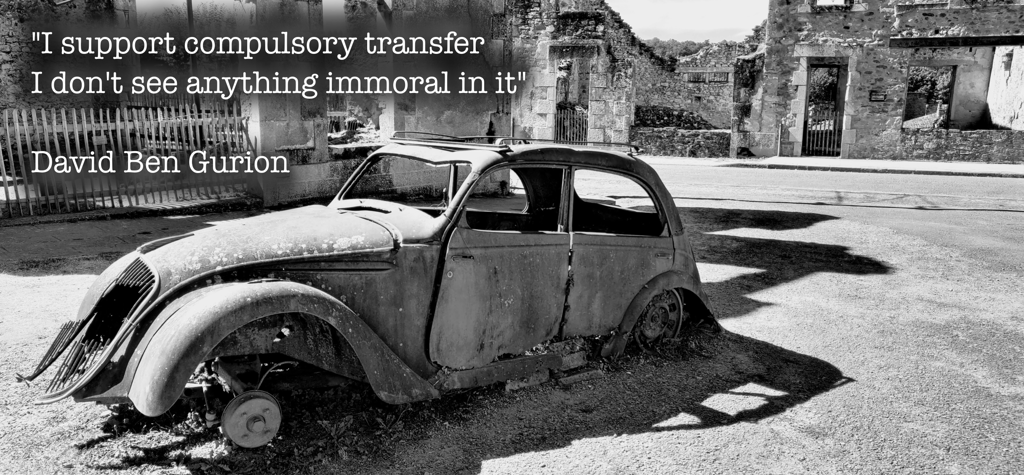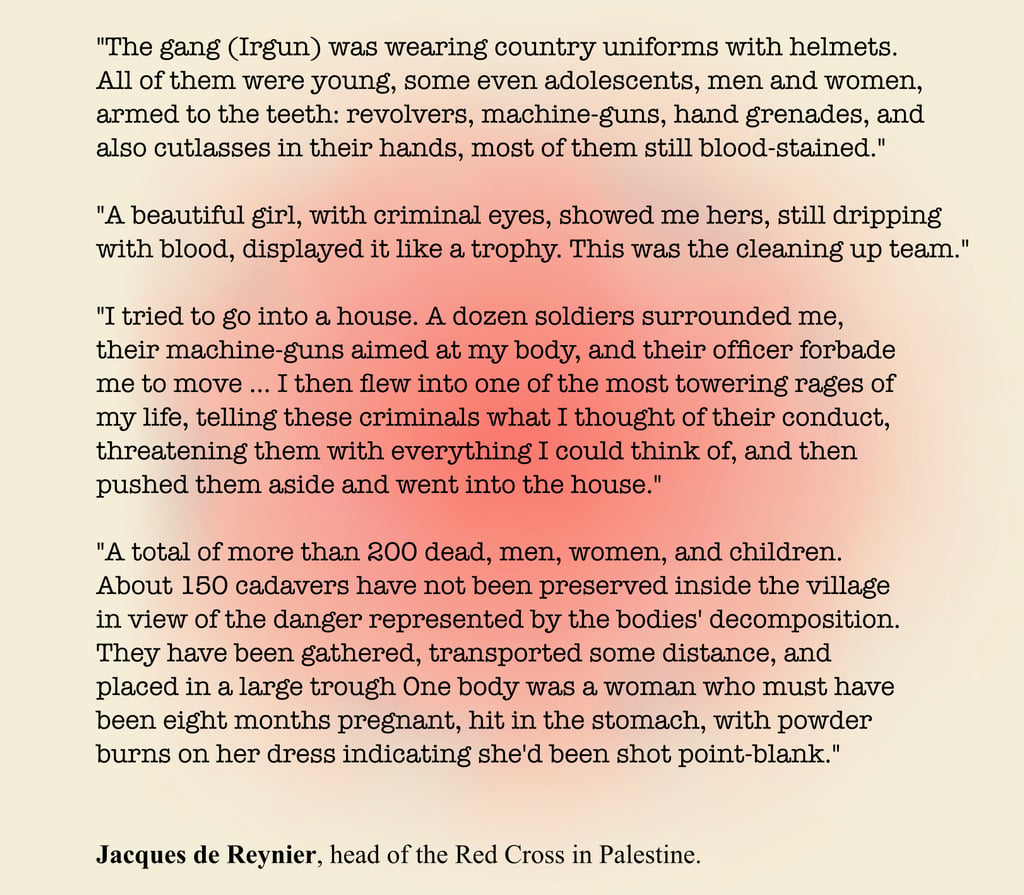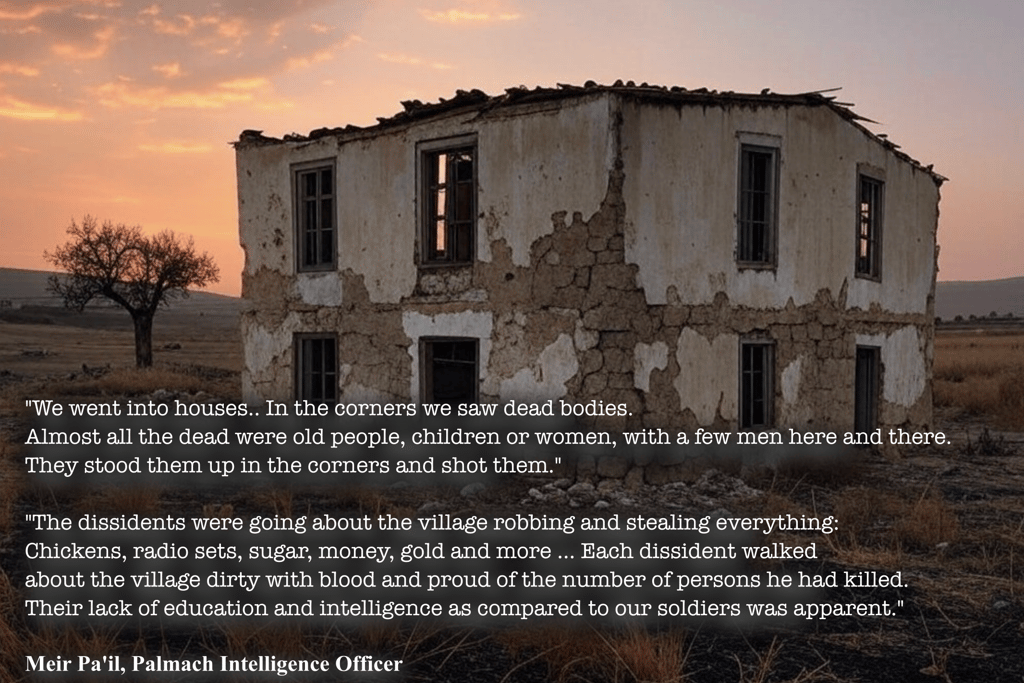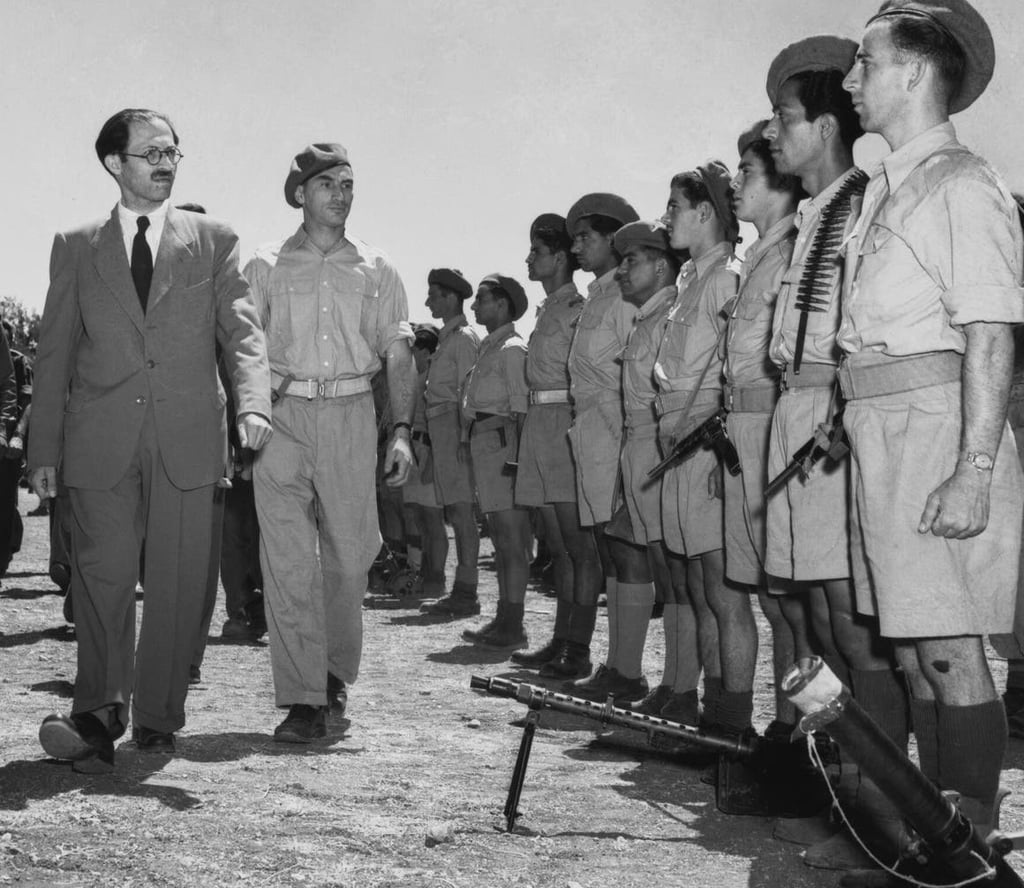"The Absolute Dregs of Degradation"
Unpacking the Deir Yassin Massacre in 2 minutes
1/24/20252 دقيقة قراءة
When the First PM of Israel said "compulsory transfer", he was referring to ethnic cleansing.
On April 9th 1948, five weeks before the founding of Israel, a combined force of Zionist paramilitaries attacked the village of Deir Yassin, near Jerusalem.
The attackers were from the Irgun and Lehi, terrorist groups responsible for numerous attacks on British Authorities as well as Palestinian Arabs. In support were regular units from the Haganah, who initially remained outside. At 4.30am, 132 men entered the village and began moving house to house, clearing them with explosives. Two Bren guns were set up at vantage points with another being mounted on an armoured car which promptly crashed.
Deir Yassin was a pastoral community that enjoyed good relations with the nearby Jewish settlements. The villagers were thrown into confusion as they woke to the sounds of explosions and automatic gunfire. Some resisted, some tried to flee, most stayed in the relative safety of their homes as long as they could.
Mohammed Jabar, a boy at the time, remembered hiding under a bed and then watching the attackers "drive everybody outside, put them against the wall and shoot them."
At around 10am, Haganah and Palmach paramilitary forces, arrived in the village:


By the end of the operation all of the villagers had been expelled, or killed and the Haganah took control of the village. In the following year the village was resettled by Israelis, becoming part of Givat Shaul, which is now a neighbourhood on the outskirts of West Jerusalem.




During the day, prisoners were loaded into trucks that came to and departed from Deir Yassin. Some were paraded through the streets of West Jerusalem, where they were jeered, spat at, and stoned, some were released in East Jerusalem and some were returned to Deir Yassin where they were lined up and executed by Irgun with submachine guns.
Most of the attackers used by Irgun and Lehi were teenagers with some women in supporting roles. Despite their confidence, the fighters were by all accounts ill-prepared, untrained, and inexperienced.
The leaders of both the Irgun and Lehi (The Stern Gang) went on to become Prime Ministers of Israel. Both terrorist organisations would dissolve in the following months and join with the Haganah to form the Israeli Defence Force.
The massacre greatly accelerated the 1948 Palestinian expulsion and flight and strengthened the resolve of Arab governments to intervene, which they did five weeks later, beginning the 1948 Arab–Israeli war.
"The world must be told about these people, the Irgun and the Stern Gang
- the absolute dregs of degradation."
Sir Alan Cunningham, High Commissioner for Palestine


Future PM Menachem Begin inspects Irgun fighters in August 1948


